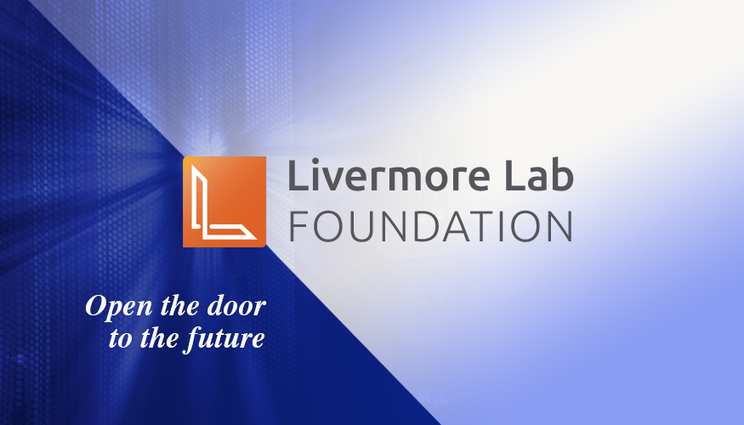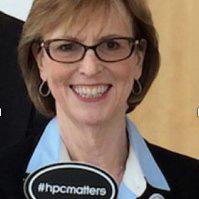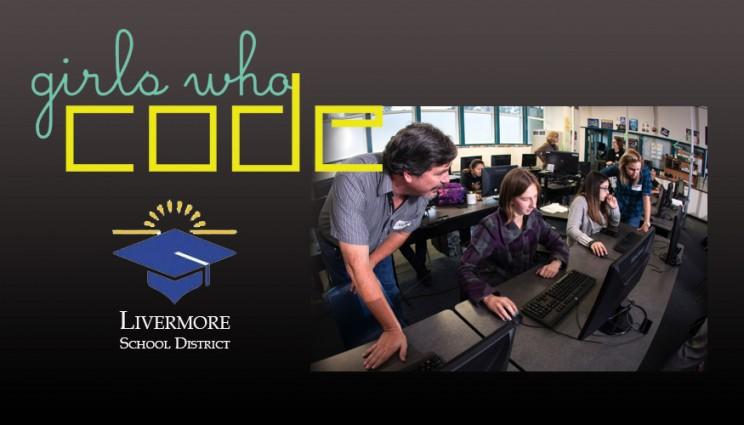New Livermore Lab Foundation supports scientific advancement through philanthropy
 (Download Image)
The recently launched Livermore Lab Foundation represents a new opportunity to support scientific advancement. The foundation was formed to generate philanthropic backing of scientific research, technological development and educational outreach activities at Lawrence Livermore National Laboratory.
(Download Image)
The recently launched Livermore Lab Foundation represents a new opportunity to support scientific advancement. The foundation was formed to generate philanthropic backing of scientific research, technological development and educational outreach activities at Lawrence Livermore National Laboratory.
The recently launched Livermore Lab Foundation (LLF) represents a new opportunity to support scientific advancement. LLF was formed to generate philanthropic backing of scientific research, technological development and educational outreach activities at Lawrence Livermore National Laboratory (LLNL).
LLF is a 501(c)(3) tax-exempt charitable organization that can accept donations from any member of the public -- including individuals, businesses, colleges and universities and other charitable foundations. The foundation has been in development for the past two years, and is modeled on similar foundations that are in place at Lawrence Berkeley National Lab, Los Alamos National Laboratory and many universities. LLF is now launching its focused fundraising campaigns around select Lab activities. The Lab gives back to the community in many ways, and the foundation provides one more avenue for science, engineering and technology innovation at the Lab to serve LLNL’s mission of making the world a safer place.
Dona Crawford, who retired as associate director of the Lab's Computation Directorate after 15 years at LLNL, serves as president of LLF. Throughout her career, Crawford has advocated for U.S. leadership in high-performance computing and for STEM education, especially for underrepresented populations. She has served on numerous national scientific advisory committees, review panels and nonprofit boards, and has briefed senior U.S. officials and corporate bodies on the importance of both the national laboratories and high-speed computing. Given her broad background, Crawford is uniquely versed in the intersection of science and philanthropy.
"The Livermore Lab Foundation offers an opportunity for donors -- those who simply love science and who want to see the Lab thrive and grow -- to support the cutting-edge research being done at the Lab," Crawford said. "It’s exciting to be able to fuse these interests -- and it’s absolutely essential to continue making and increasing these connections."
The upcoming Girls Who Code event, scheduled for Oct. 10 at LLNL, is the first beneficiary of LLF donor funds. The high school students who worked with the Lab's Girls Who Code project last year will participate in an on-site workshop with Lab scientists, using code to explore 3D printing.
"Everybody has those ‘a-ha moments’ at certain points throughout their life, and I really hope this will be one of those moments for these girls," Crawford said. "Some of them are going to become computer scientists, and some of them may even come and work at the Lab as adults because of the experience they have during this event."
Public engagement and support is one of the foundation’s priorities, as are other educational options such as providing donors with an opportunity to help fund a student’s time at the Lab or their associated expenses. A targeted LLF campaign also is underway to provide support for LLNL research into neural implant technology that could result in breakthroughs for treatment of neurodegenerative disorders.
"Diseases like Alzheimer’s, Parkinson’s, Lou Gehrig’s Disease and multiple sclerosis affect an increasing percentage of Americans," Crawford said. "This focused LLF campaign provides an opportunity for public support of the cutting-edge research being done at LLNL in neural implants."
Donations to the Livermore Lab Foundation may be "restricted" (dedicated to a certain project or topic) or "unrestricted" (available for use at the discretion of the LLF board of directors). Foundation funding of projects at the Lab will be in alignment with high priority Laboratory Science & Technology (S&T) goals and will be subject to standard contractual mechanisms and approval procedures. And while scientific and technological projects at LLNL are one of LLF’s main focuses, the foundation also will use its resources to fund external activities and programs that are consistent with LLNL’s values. This includes sponsoring STEM student scholarships and donations of lab supplies to local schools, as well as other external efforts that support the growth of scientific passion and curiosity in the community.
LLF is a stand-alone organization, separate and independent from LLNL, Lawrence Livermore National Security (LLNS), the University of California and other LLNS members, although it does receive administrative and financial support through a contractual arrangement with UC. LLF is managed by its board of directors, which includes Crawford, Director Bill Goldstein, Greg Suski, Buck Koonce and Mike Carter from LLNL, and Kim Budil and Brett Henrikson from UC. As the foundation grows, LLF’s intention is to include donors and other community members on the board as well.
"I think it’s good for the Lab, it’s good for philanthropists," Crawford said about the launch of the foundation. "I’ve thought this would be beneficial to the Lab for a long time now. Many philanthropies are social charities, so the foundation provides a unique opportunity for philanthropists to support science in the public interest with the specialized expertise and facilities at LLNL. Leveraging the Lab’s work for social good is something that I think is very special."
Crawford will be speaking to groups around the Laboratory about the foundation, and looks forward to input from Lab employees regarding its future endeavors.
Visit the web to learn more about the foundation or send an info [at] livermorlabfoundation.org (email).
Contact
Maren Hunsberger[email protected]
19254226688
Related Links
Livermore Lab FoundationCommunity Giving at LLNL
Tags
HPC, Simulation, and Data ScienceComputing
Community Outreach
Featured Articles









